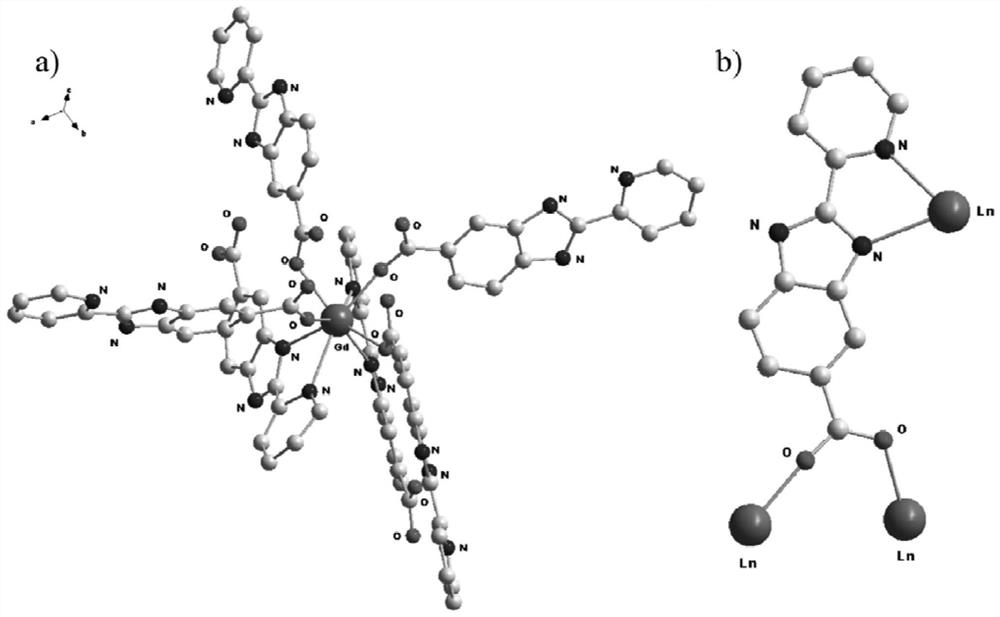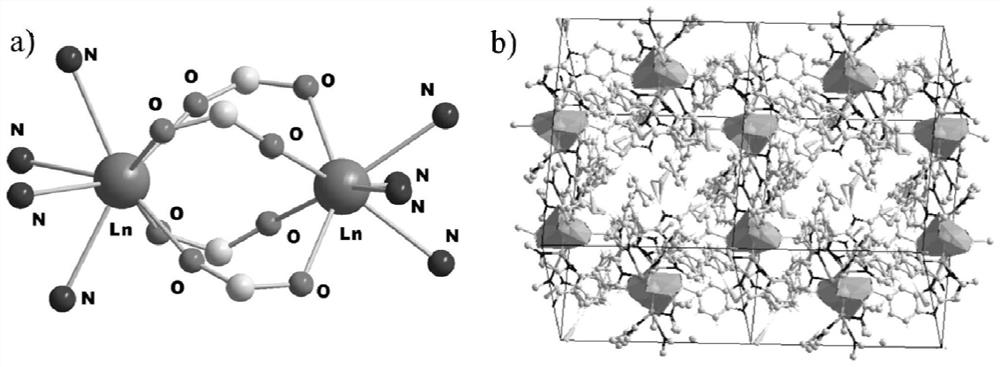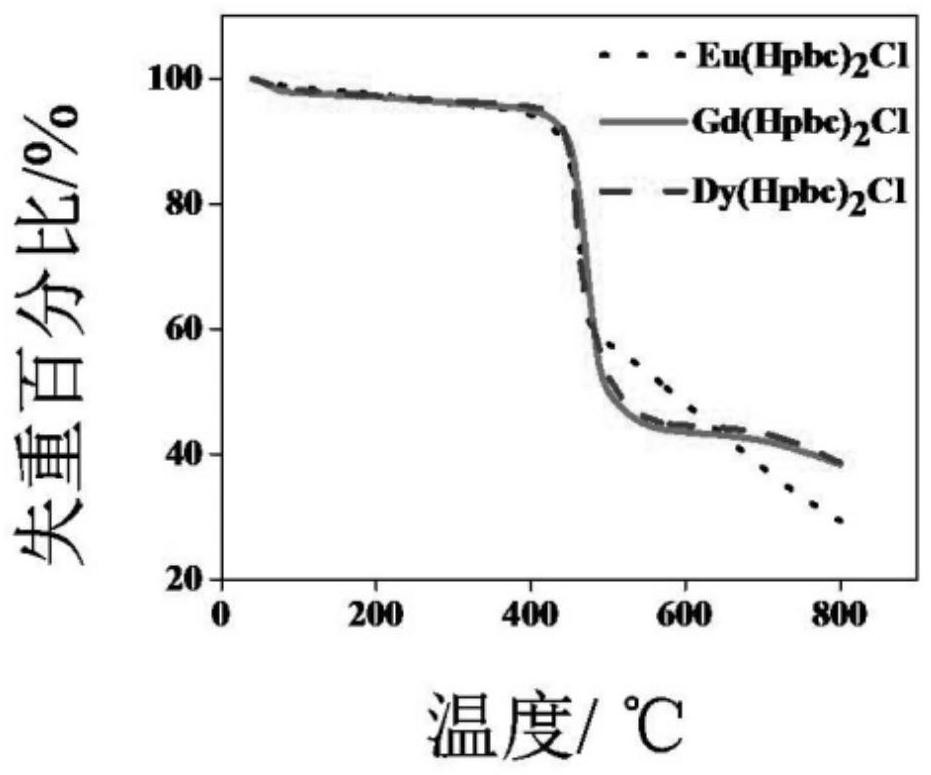A kind of radiotherapy-sensitized antitumor drug and preparation method thereof
A technology of anti-tumor drugs and rare earth complexes, which is applied in the direction of anti-tumor drugs, drug combinations, and pharmaceutical formulations, and can solve the problem of few rare earth complexes, and achieve the effects of low raw material cost, good application prospects, and simple and convenient preparation process
- Summary
- Abstract
- Description
- Claims
- Application Information
AI Technical Summary
Problems solved by technology
Method used
Image
Examples
Embodiment 1
[0040] Example 1 Dy(Hpbc) 2 Preparation of Cl
[0041] 2‐(pyridine‐2‐yl)‐1H‐benzo[d]imidazole‐6‐carboxylic acid (abbreviated as H 2 pbc), DyCl 3 , dissolved in a mixed solution of water and acetonitrile, stirred with a magnetic stirrer in the air, and then transferred to a polytetrafluoroethylene-lined hydrothermal reaction vessel, heated to 170°C and maintained for 48 hours, and then slowly cooled to room temperature. Filtration and washing gave large light yellow blocky crystals. Through elemental analysis, it can be seen that the synthesized crystal material contains a molecule of crystal water, and the molecular formula can be abbreviated as Dy(Hpbc) 2 Cl.H 2 O. (The elemental analysis data are as follows: Found: C, 44.17; H, 2.86; N, 11.67.Calc.for Dy(Hpbc) 2 Cl.H 2 O: C, 43.96; H, 2.84; N, 11.83).
Embodiment 2
[0042] Example 2 Gd(Hpbc) 2 Preparation of Cl
[0043] 2-(pyridin-2-yl)-1H-benzo[d]imidazole-6-carboxylic acid (abbreviated as H 2 pbc), GdCl 3 , dissolved in a mixed solution of water and acetonitrile, stirred with a magnetic stirrer in the air, and then transferred to a polytetrafluoroethylene-lined hydrothermal reaction vessel, heated to 170°C and maintained for 48 hours, and then slowly cooled to room temperature. Filtration and washing gave large light yellow blocky crystals. Through elemental analysis, it can be seen that the synthesized crystal material contains four molecules of crystal water, and the molecular formula can be abbreviated as Gd(Hpbc) 2 Cl.4H 2 O. (The elemental analysis data are as follows: Found: C, 42.62; H, 2.93; N, 11.30.Calc.for Gd(Hpbc) 2 Cl.4H 2 O: C, 42.13; H, 3.26; N, 11.34).
Embodiment 3
[0044] Example 3 Eu(Hpbc) 2 Preparation of Cl
[0045] 2-(pyridin-2-yl)-1H-benzo[d]imidazole-6-carboxylic acid (abbreviated as H 2 pbc), EuCl 3 , dissolved in a mixed solution of water and acetonitrile, stirred with a magnetic stirrer in the air, and then transferred to a polytetrafluoroethylene-lined hydrothermal reaction vessel, heated to 170°C and maintained for 48 hours, and then slowly cooled to room temperature. Filtration and washing gave large light yellow blocky crystals. Through elemental analysis, it can be seen that the synthesized crystal material contains a molecule of crystal water, and the molecular formula can be abbreviated as Eu(Hpbc) 2 Cl.H 2 O. (Found: C, 45.93; H, 3.18; N, 12.26. Calc. for Eu (Hpbc) 2 Cl.H 2 O: C, 45.80; H, 2.66; N, 12.33).
PUM
 Login to View More
Login to View More Abstract
Description
Claims
Application Information
 Login to View More
Login to View More - R&D
- Intellectual Property
- Life Sciences
- Materials
- Tech Scout
- Unparalleled Data Quality
- Higher Quality Content
- 60% Fewer Hallucinations
Browse by: Latest US Patents, China's latest patents, Technical Efficacy Thesaurus, Application Domain, Technology Topic, Popular Technical Reports.
© 2025 PatSnap. All rights reserved.Legal|Privacy policy|Modern Slavery Act Transparency Statement|Sitemap|About US| Contact US: help@patsnap.com



